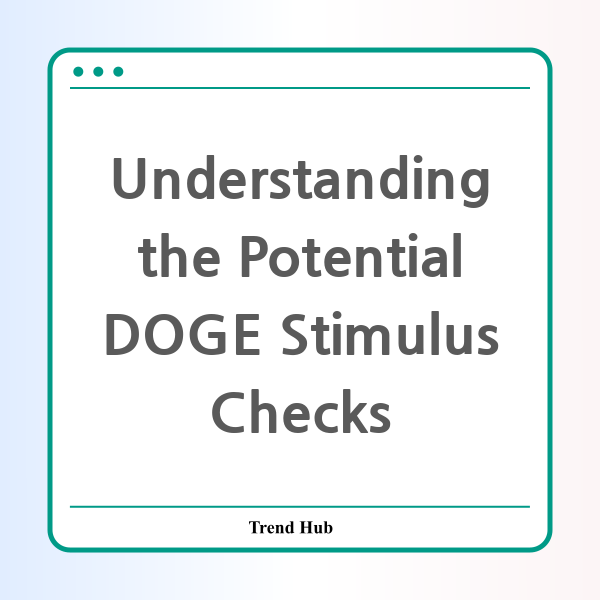* This website participates in the Amazon Affiliate Program and earns from qualifying purchases.

As discussions surrounding economic relief arise, many Americans are left asking: Will I receive a DOGE stimulus check? In recent statements, former President Donald Trump and tech billionaire Elon Musk have brought the idea of DOGE dividends to the forefront. But what exactly does this entail? Let’s dive into the details to clarify the concept of the proposed DOGE stimulus checks and who may qualify for them.
The DOGE dividend initiative, as proposed, could involve a significant payout to taxpayers, with discussions pointing towards a potential $5,000 payment funded by savings from government efficiency measures spearheaded by Musk's Department of Government Efficiency (DOGE). This initiative aims to return a portion of savings identified through spending cuts back to the American people.
What is DOGE and the Proposed Dividend Check?
The DOGE initiative is designed to enhance government efficiency by reducing wasteful spending and streamlining operations across federal agencies. This in turn is expected to generate considerable savings—potentially up to $2 trillion annually. The innovative idea of a DOGE dividend check, as suggested by investment firm CEO James Fishback, aims to distribute a part of these savings as a refund to taxpayers.
A primary point of contention is whether this DOGE dividend would resemble traditional stimulus checks. Unlike pandemic-era payments, which were broadly issued to stimulate the economy, the DOGE dividend would specifically target net-income taxpayers—those who pay more in taxes than they receive. This targeted approach would mean that not all Americans would qualify, particularly lower-income households.
Who Qualifies for a DOGE Stimulus Check?
According to the proposed guidelines, the DOGE dividend would be allocated only to households that are net-income taxpayers, essentially excluding individuals with lower incomes who often receive more in tax refunds than they pay. Research indicates that households with an adjusted gross income under $40,000 are less likely to be included in this refund program. Instead, the proposed checks would be sent per household rather than on an individual basis, thus including those eligible for Social Security benefits who meet tax requirements.
Current Status and Expectations
Despite the enthusiasm surrounding the potential DOGE stimulus checks, concrete updates are still forthcoming. Fishback recently stated that discussions within both the House of Representatives and Senate have yielded encouraging feedback, and a bill detailing the DOGE dividend is anticipated soon. However, the Federal Reserve has remained non-committal about the proposal, emphasizing that fiscal policy decisions require thorough consideration and political collaboration.
While there is a palpable hope among Americans for relief in the form of DOGE checks, it is essential to recognize that any potential payments must go through legislative approval. Current calculations surrounding the total savings generated by the DOGE initiative remain contentious, as some reports indicate that initial estimates may overstate the actual figures.
Public Reactions and Speculation
As news of the DOGE stimulus checks continues to circulate, social media has seen a wave of speculation and public opinion. People are expressing both excitement and skepticism about whether such a check will indeed manifest, and if it does, for whom it will be intended. The discussions highlight a broader conversation about fiscal responsibility and the role of government in providing relief.
Conclusion
In summary, while the idea of a DOGE stimulus check has generated significant interest, several factors must be considered before it becomes a reality. Potential beneficiaries should be aware of the eligibility criteria, which currently favor net-income taxpayers, and keep an eye on legislative developments. With the promise of economic relief on the horizon, many are left to wonder how much of the anticipated savings will ultimately make its way back to the taxpayers who fund government efforts.
* This website participates in the Amazon Affiliate Program and earns from qualifying purchases.